From the cyan waters that surround the Cayman Islands, master expeditioners Dave and Amy Freeman invite students from around the globe to step through their screens and onto their beloved sailboat, Iron Bark.
From here, the Freemans teach about the oceans and coral reefs that surround them, marine animals, and environmental concerns. They also give students a tour of their boat and a peek into their unique lifestyle.
The couple, who have been sailing for more than a year, have been a liaison between children and the natural world for more than two decades through The Wilderness Classroom. What has grown into an educational outreach that engages over 100,000 students annually, emerged from humble beginnings.
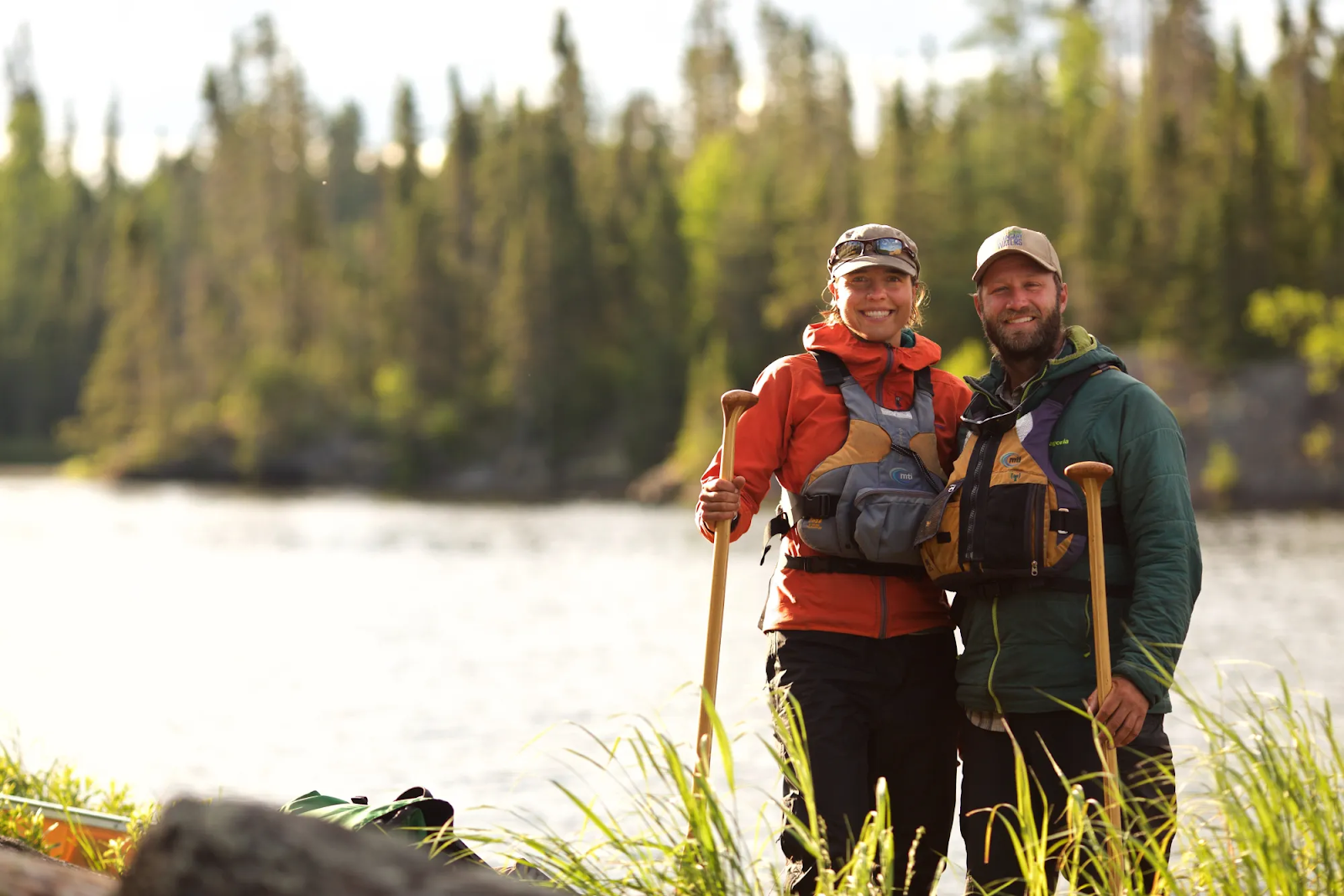
Amy and Dave Freeman in the Boundary Waters. Photo by Nate Ptacek
Following a season of leading dogsledding trips in the Boundary Waters of northern Minnesota, Dave Freeman was inspired to venture out on a solo expedition in the area that would be the first in a continuous series of such adventures throughout his life.
The Boundary Waters is a vast wilderness that runs 150 miles along the U.S.-Canada border. It comprises nearly 1.1 million acres with over 1,100 lakes and 1,500 miles of canoe trails.
In 2000, he set out to spend six weeks dogsledding the area alone.
At the relentless urgings of his mother, Dave had obtained a simple satellite phone that would allow him to call for help if he found himself in trouble in this frozen backcountry wilderness. He also discovered that the device could send location information, text, and postage-stamp sized pictures. “Basically, it was like blogging when blogging was in its infancy,” Dave said.
Upon realizing the device’s capabilities, Dave convinced a half dozen schools to follow along on his expedition. He was greeted by genuine enthusiasm and interest from the students who were following him on his journey and hasn’t looked back since.
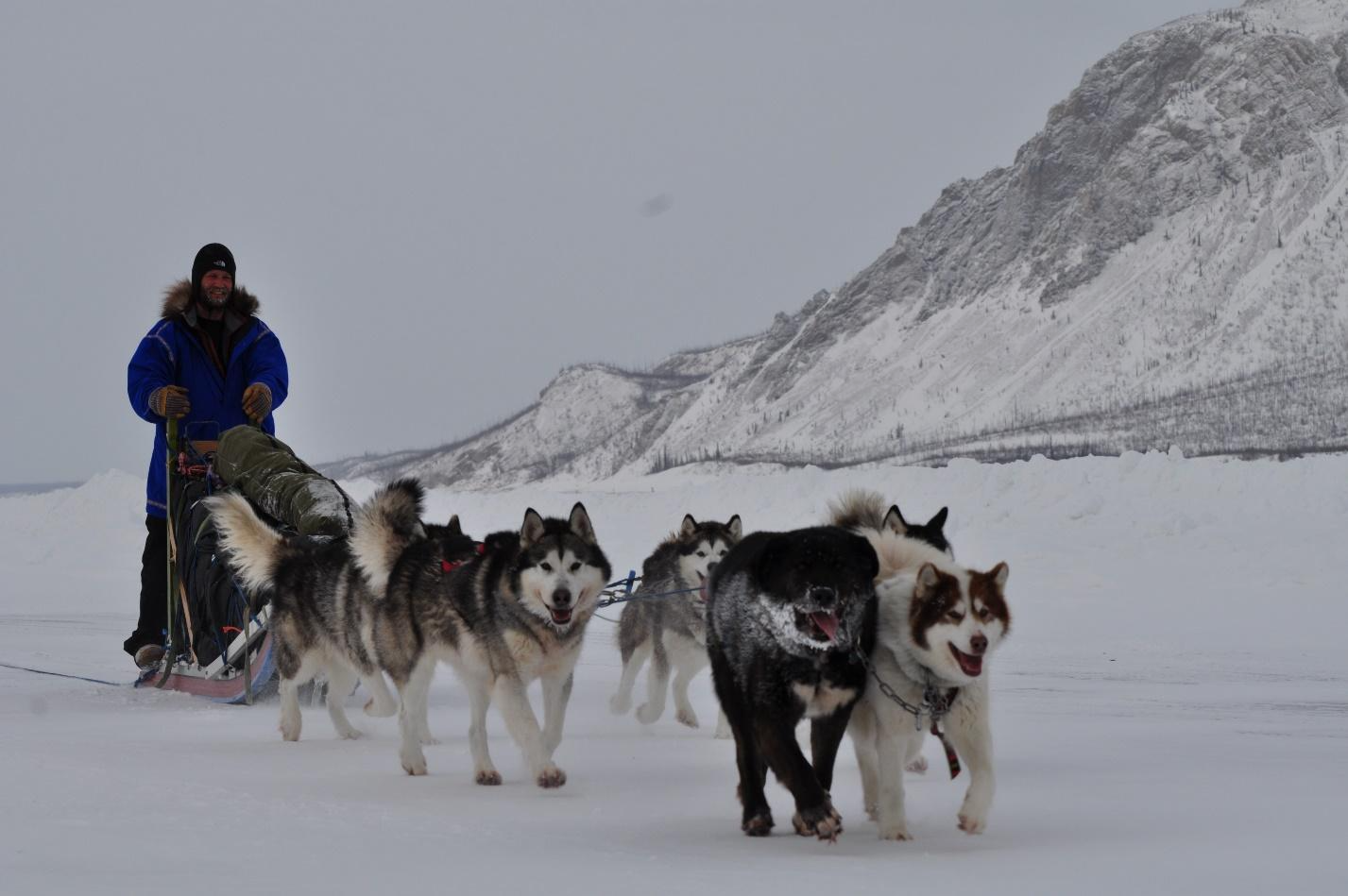
Dave dog sledding. Courtesy of Dave and Amy Freeman
Around the world
Growing up outside of Chicago, Dave was far from being steeped in the wilderness. He had exposure to the outdoors through regular family camping trips however, it was a trip to the Boundary Waters during his middle school years that sparked his great love for the outdoors—one that he’s tended ever since.
This love for not only the outdoors, but for wilderness expeditions, is shared between Dave and his wife, Amy.
The pair met in 2005 in Grand Marais, Minnesota, where Amy was leading sea kayaking trips on Lake Superior. Dave was leading trips in the Boundary Waters Canoe Area Wilderness (BWCAW) and expanding his work with The Wilderness Classroom.
The following year in the fall of 2006, Amy and Dave undertook their first major expedition together—a 1,000-mile circumnavigation of Lake Superior during the notoriously blustery months of September and October.
Just prior to Halloween they celebrated the completion of their 54-day journey—16 of which they were windbound for.
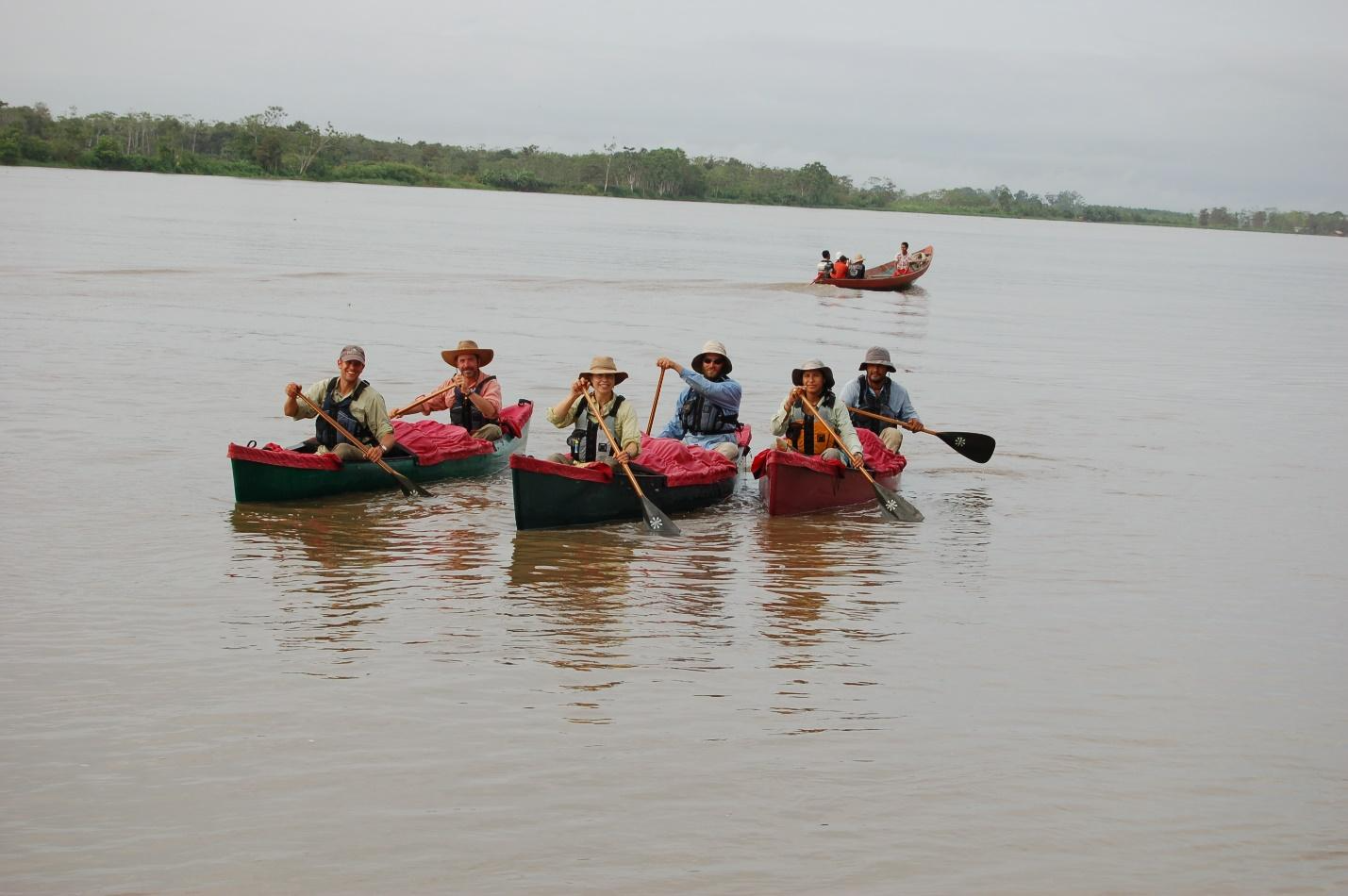
Canoeing during the trans-Amazon expedition. Courtesy of Dave and Amy Freeman
The following year the duo embarked on a trans-Amazon expedition. Throughout the course of the 3,000-mile journey they led a team of scientists, educators and explorers from around the world through South America—first cycling from the Pacific Ocean over the Andes Mountains, before spending the next six months paddling across the Amazon Basin to the mouth of the Amazon River.
This was on the heels of Dave leading two six-week canoe trips in the Peruvian Amazon in the two preceding years. All the while expanding their offerings through The Wilderness Classroom and exposing students to the unique environments they were exploring.
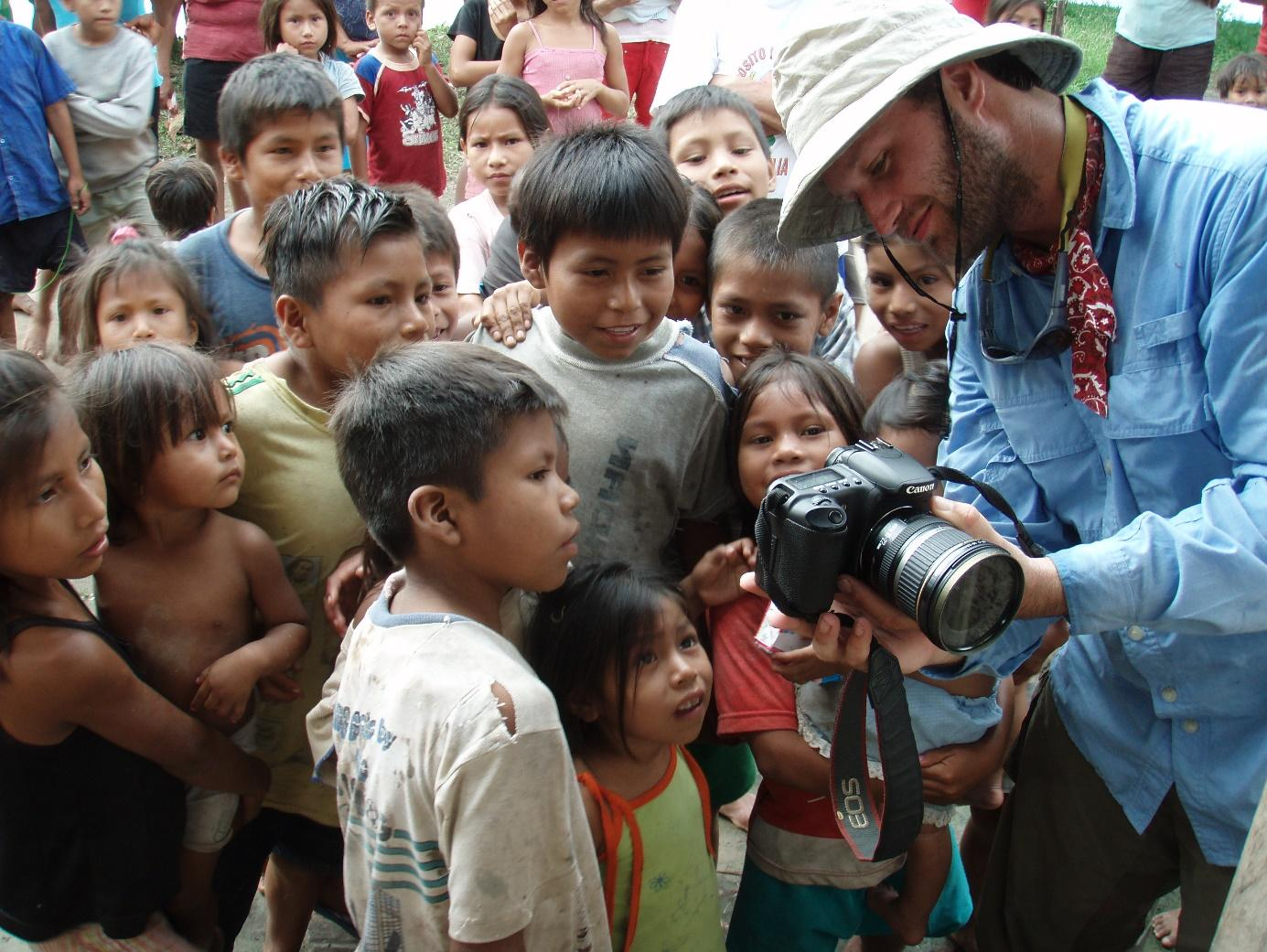
Dave showing photos to local children. Courtesy of Dave and Amy Freeman
The Freemans were able to teach students about the rainforest from a rainforest, beaming into classrooms to inspire and excite by animating concepts and species that previously lay inanimate in books and magazines.
Species like the Pink Amazon River Dolphins that would swim near them in the river or follow their canoes while paddling, piranhas—which are most diverse in the Amazon River where 20 varieties are found, and an ever-rotating cast of birds competing for the spotlight in the jungle pageantry.
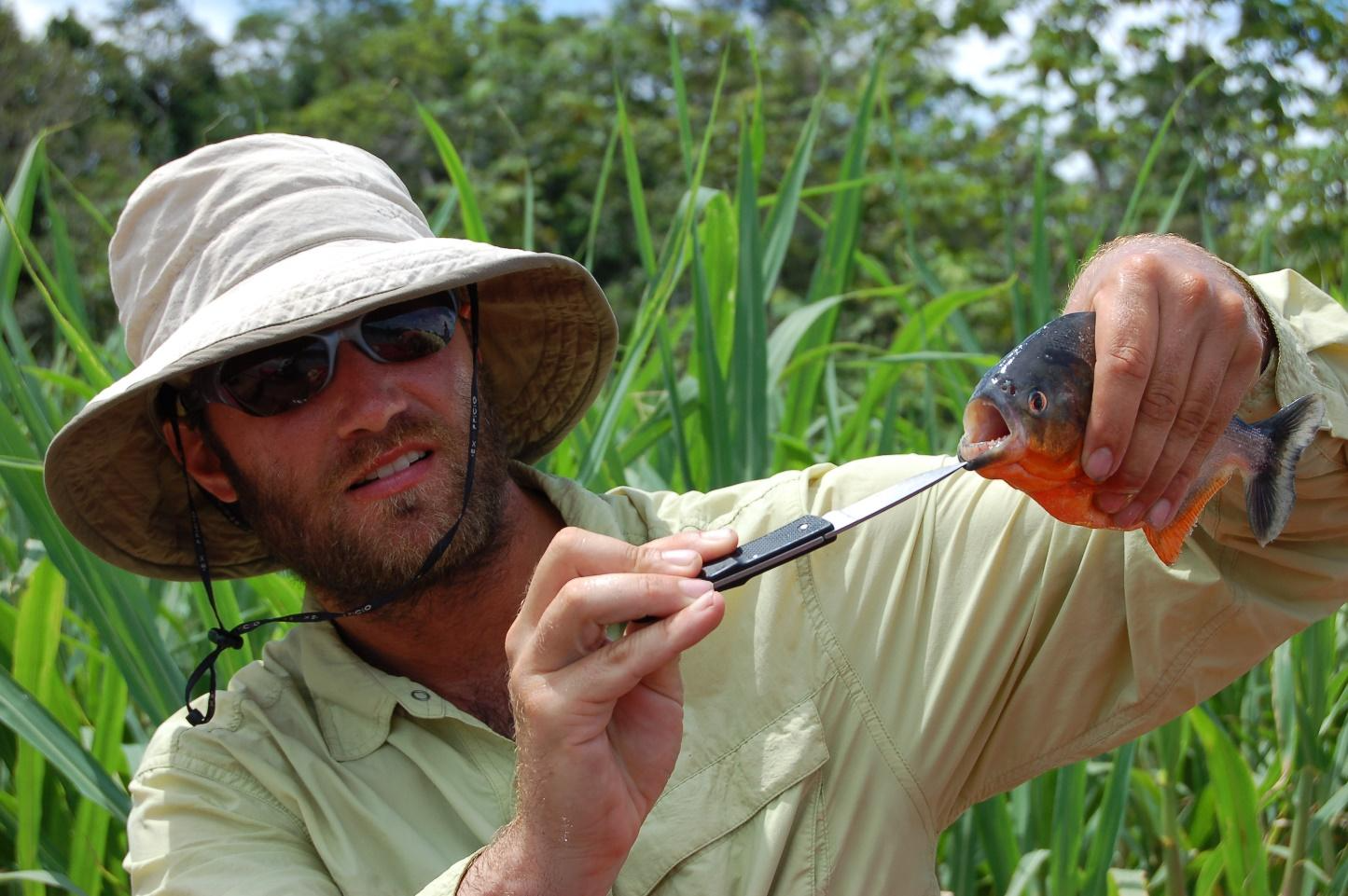
Dave showing off a piranha’s teeth. Courtesy of Amy and Dave Freeman
“I think for both of us, it's a combination," Dave said of their continued educational efforts. "It allows us to do what we love to do, and we really enjoy engaging with the next generation and showing them what's possible.”
Though the Freemans were becoming increasingly familiar with the unique ecosystems of South America, they set their sights on exploring some of the most remote and unique places on the North American continent next.
In 2010, the couple set out on a three-year-long expedition known as the North American Odyssey, travelling nearly 12,000 miles throughout the U.S. and Canada by sea kayak, dog sled and canoe.
An adventure of a lifetime that they are currently writing a book about.
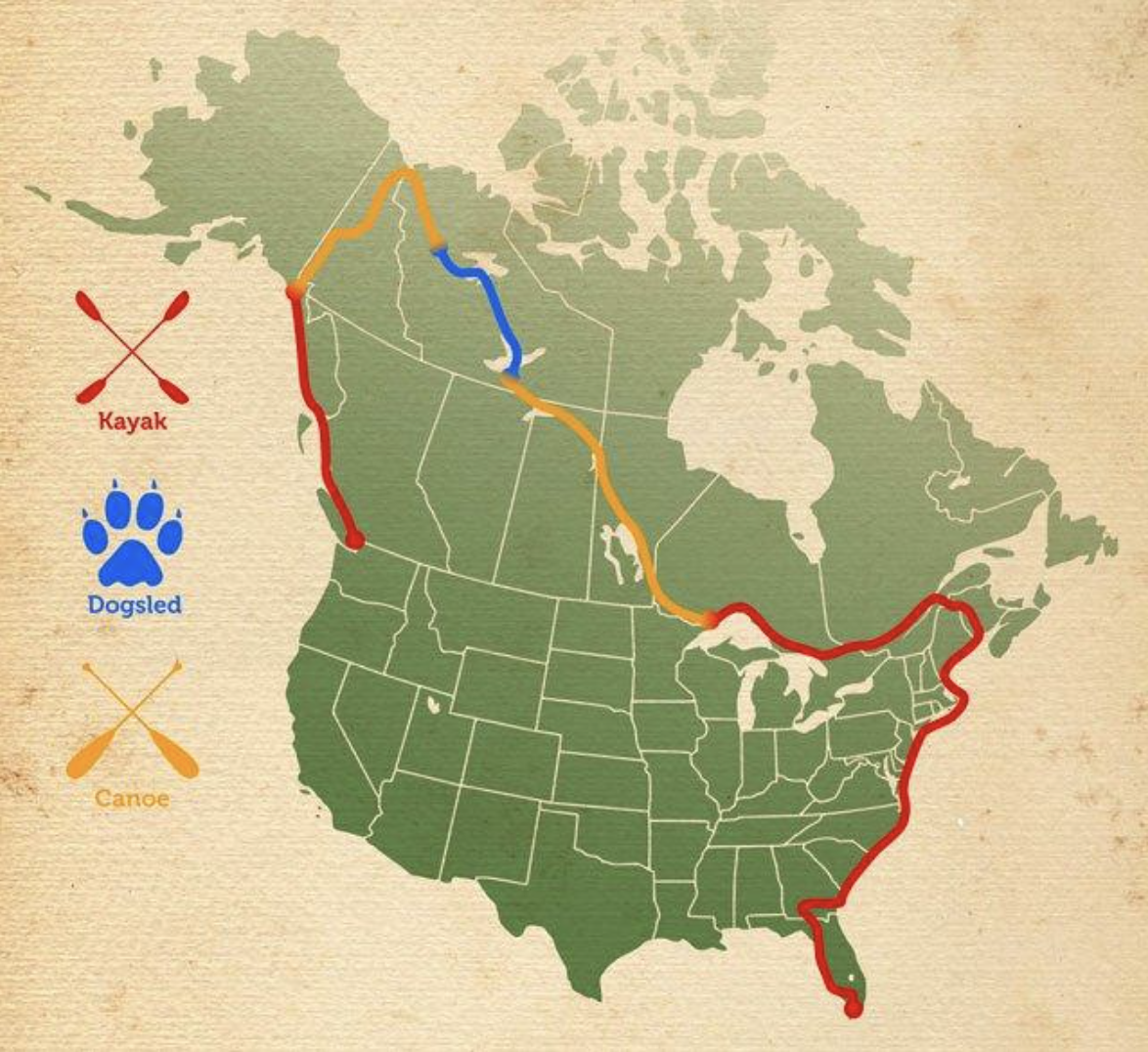
Route map for the North American Odyssey. Courtesy of Dave and Amy Freeman
The first leg of this journey was sea kayaking the Inside Passage—a 1,000-mile stretch from Washington State to southeast Alaska.
While Amy was accustomed to paddling in serious sea kayaking conditions on Lake Superior, this leg of the journey marked her introduction into ocean paddling with major tidal exchanges.
Another highlight of this stretch was the wildlife. “Half the time there are all sorts of sea creatures out of the water, like sea urchins, sea stars and anemones," Amy said. "The other half of the time they're submerged just below and you’re seeing sea otters and whales. It’s pretty special."
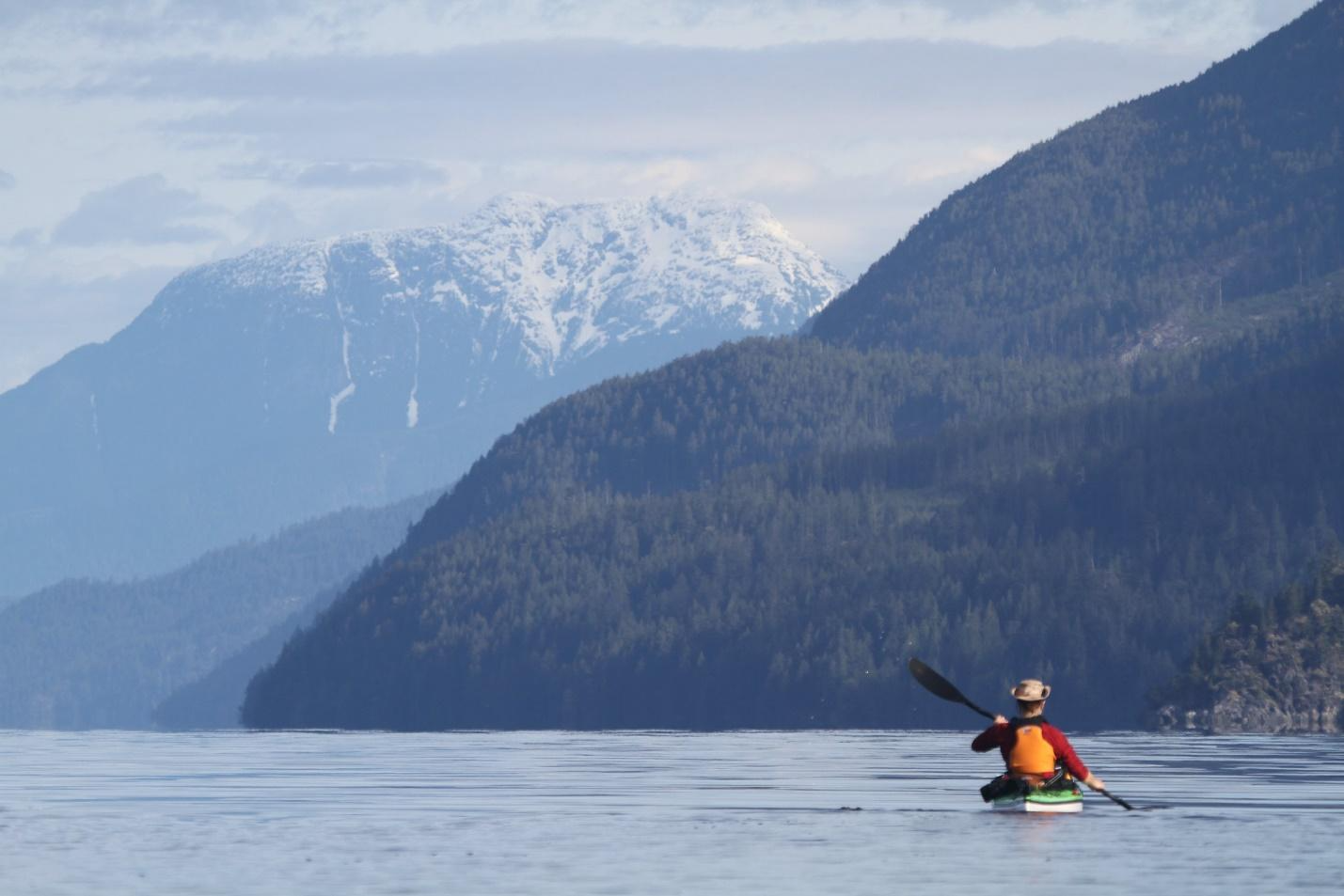
Amy paddling the Inside Passage. Courtesy of Dave and Amy Freeman
After departing from the corner of Alaska that greeted them upon the completion of their first stretch, they continued to the northern tip of the Yukon—switching to canoes for their first river section of the trip, before dogsledding through the Northwest Territories.
Picking up their paddles once again, the pair charted a river course that led them to the corner of northern Minnesota that they know and love so dearly.
The Freemans spent the final year of their journey paddling out through the Great Lakes, down the Saint Lawrence Seaway, and down the Atlantic Coast to Key West, Florida.
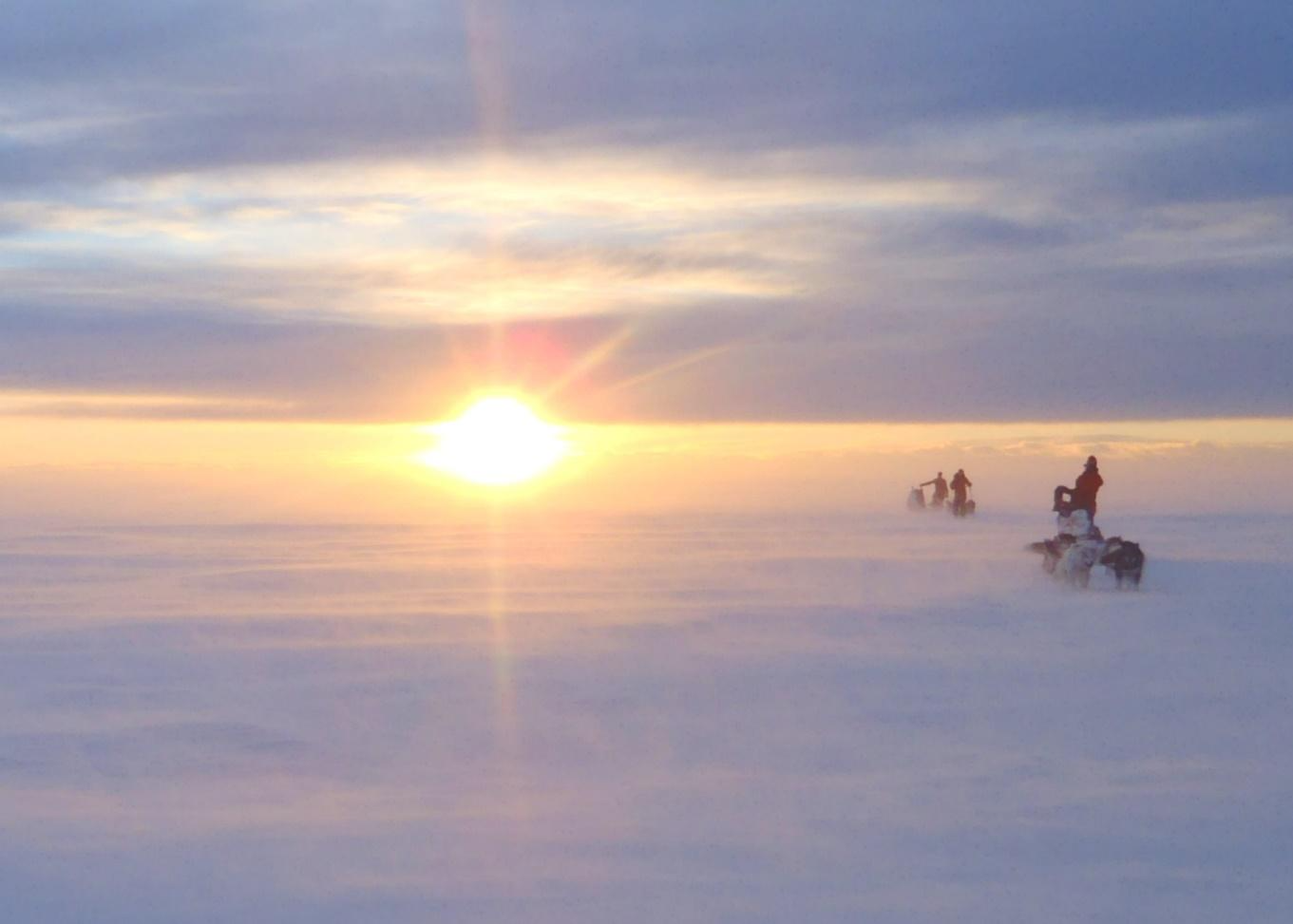
Dogsledding in the Northwest Territories. Courtesy of Amy and Dave Freeman
It was in this final year, during the leg that brought them down the East Coast that they began to encounter people sailing and living on their boats. Their interest was piqued.
When they returned to northern Minnesota after the completion of their three-year Odyssey, the duo bought their first sailboat from a friend.
Not only did they have a hard time envisioning themselves transitioning to a house after three years in a tent, but they also felt that it was a natural next step for them.
They spent the summer in Grand Marais living on the boat in the harbor and teaching themselves how to sail.
Additionally, adding a sailboat to their arsenal has opened up a new world of adventures to them. Massive ocean crossings can be undertaken, not to mention that the daily hunt for a campsite is abated, and they always have a place to seek shelter from the elements.
Admittedly, “It made life easier in a lot of ways, but we can still be on the move,” Amy said.
Close to home
The year following their North American Odyssey, the Freemans combined their classic love of paddling and their newfound fondness for sailing in a trip that was aimed at bringing awareness to, and in protest of, proposed copper ore mining within the Boundary Waters watershed.
According to the Save the Boundary Waters campaign, “Sulfide-ore copper…mining generates waste rock full of sulfates, which, when exposed to air and water, becomes sulfuric acid, and leaches toxins like heavy metals into the surrounding water.”
In August of 2014, the Freemans set out from Ely, Minnesota, on a 101-day paddling trip to Washington, D.C. They traversed the smaller waterways of the U.S. and Canada via canoe and sailed through the Great Lakes on their first sailboat, Yemaya, with their canoe onboard.
Their canoe acted as a petition and was signed by thousands of people who were opposed to the proposed mining operation. It was delivered to the White House in December of that year.
That same year, Dave and Amy Freeman were bestowed with the incredible honor of being named National Geographic Adventurers of the Year, both for the incredible expeditions they’d completed and for their pioneering work in wilderness education.

The Freemans with the petition canoe. Photo by Layne Kennedy
While the Freemans were accustomed to constant movement, they regularly returned to their chosen home of northern Minnesota. It was here that they had both fallen in love with the outdoors, gained the skills that had laid the groundwork for their expeditions, and cultivated a deep reverence for the vast, remote wilderness area of the Boundary Waters.
It was this reverence that inspired them on their paddle to D.C., to help bring awareness to the threat being posed to this pristine wilderness that boasts sterling water quality, but that didn’t feel like enough.
Throughout their journey to D.C. they found themselves in many towns along the way, speaking about the issue back at home. It was during this time that an awareness was dawning that they had spent considerable time and effort building skills to dispatch information from their ever-changing locations.
They concluded that perhaps they could affect more change by staying in one place, relatively speaking.
“We came to realize that the best way for us to contribute and continue the work to protect the [BWCA] Wilderness might be to spend a whole lot of time in the Wilderness and to share it with as many people as possible,” Amy said.
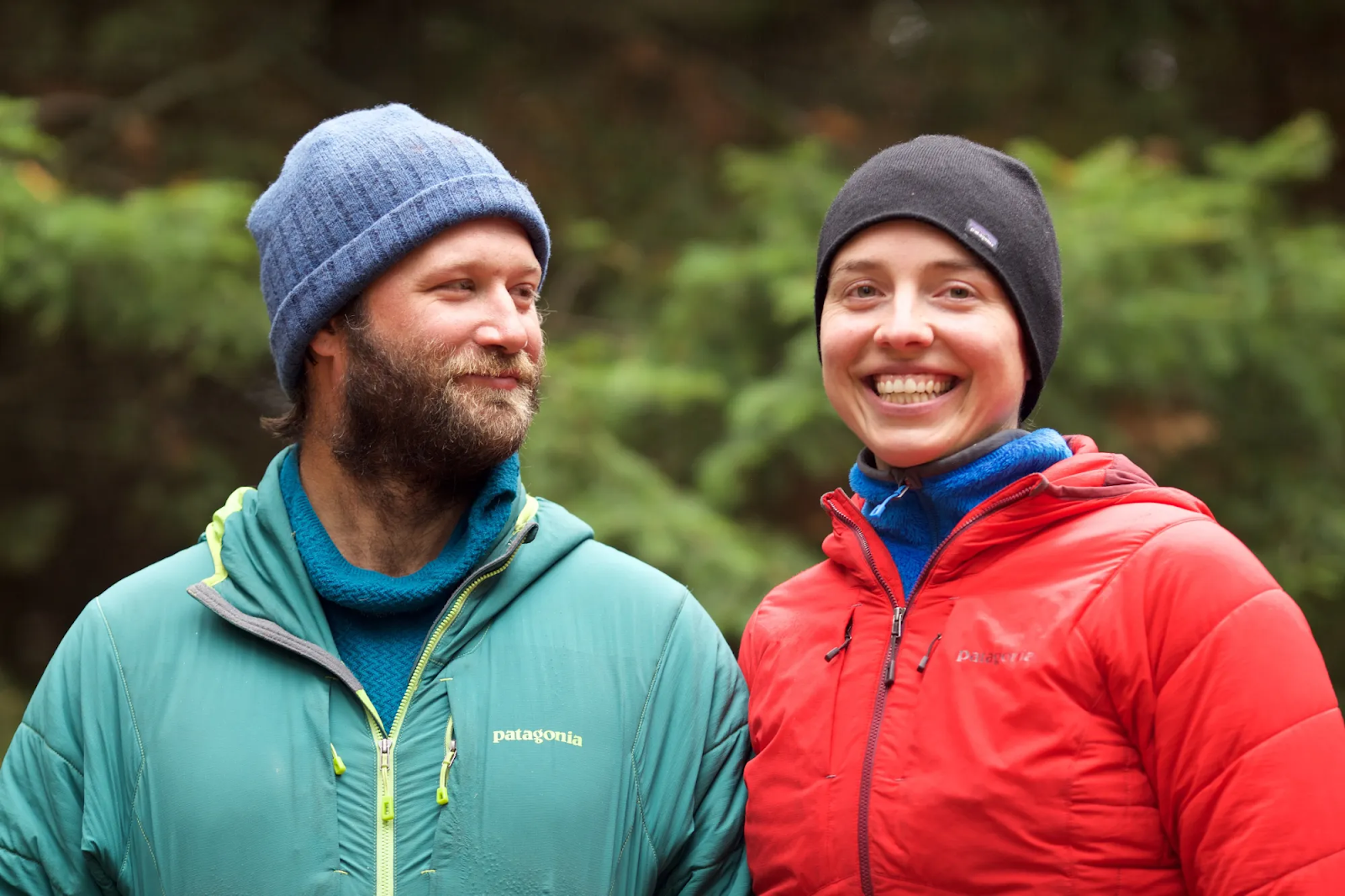
The Freemans during their Year in the Wilderness. Photo by Nick Ptacek
With that realization, came the commitment to stand in solidarity with their favorite wilderness and relay to the outside world what they experienced while there and why it is worth preserving.
On the Autumnal Equinox, Sept. 23, 2015, Amy and Dave entered the Boundary Waters Wilderness and vowed to remain there continuously for one year.
From the Wilderness the Freemans shared their experience through videos, photos and blog posts, igniting an international following of hundreds of thousands to take up the cause to Save the Boundary Waters.
By mid-winter, the nights were incredibly long in northern Minnesota, and thus, a ripe time for ideas to be born.
Amy was religiously keeping a journal. Dave had been regularly posting on their social media channels. They realized that they were generating an incredible amount of content and began talking about the idea of publishing a book about their year in the wilderness.
Realizing that timeliness was essential to the cause, they endeavored to find a publisher from the backcountry. A connection from the campaign put them in touch with Milkweed Editions, where the Freemans found a home for their intimate account of the Wilderness area and their experience.
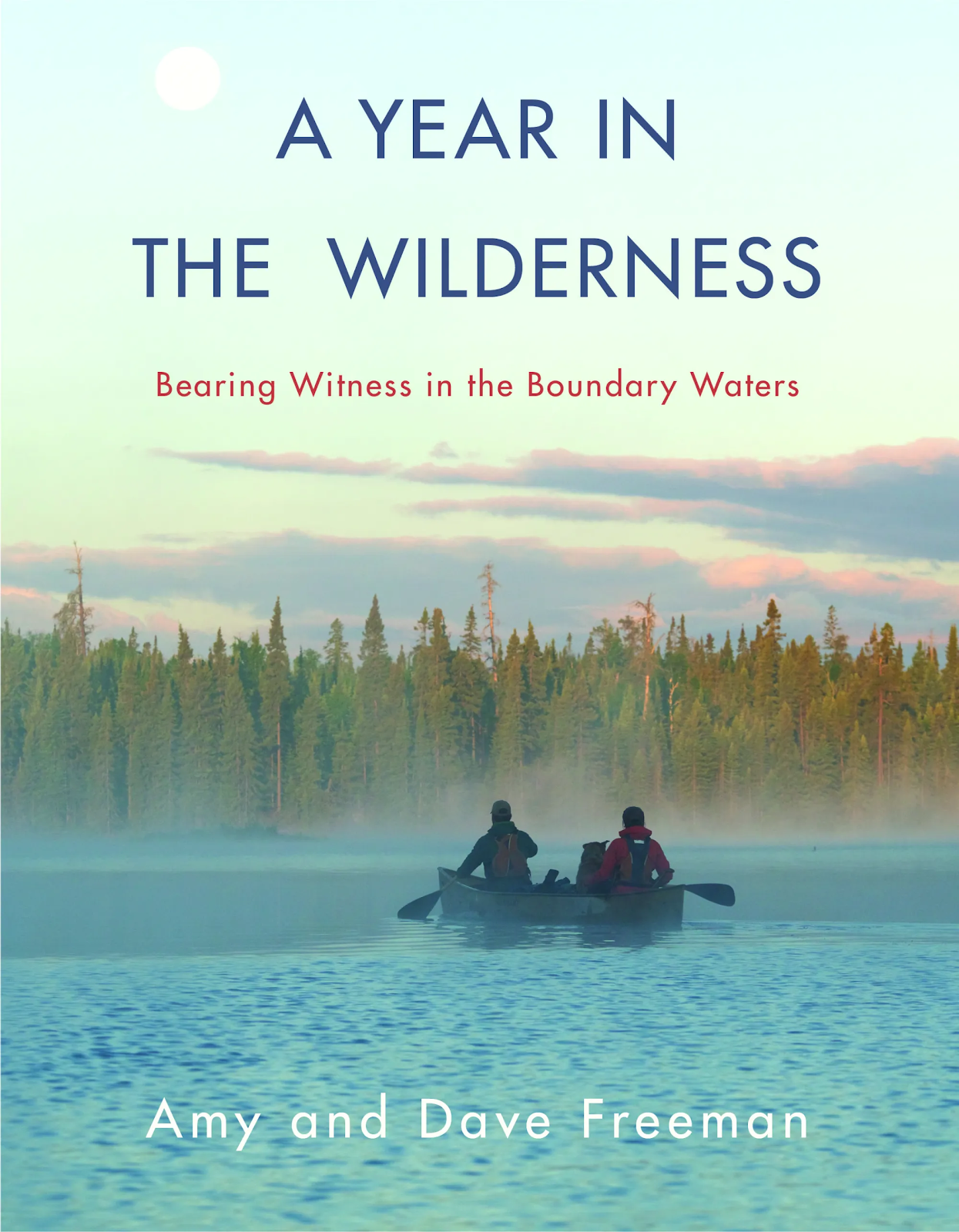
The Freemans’ book, "A Year In The Wilderness"
“The editor actually came out and met us in the Boundary Waters," Dave recounted. "He paddled and portaged in. So, we finalized our publishing agreement out there at the end of [our] year.”
On Sept. 23, 2016, 366 days after their commitment began, the Freemans loaded their canoe and paddled out, “After spending an entire year without crossing a road, entering a building, or leaving the wilderness.”
The year was full of sacred moments that come from truly steeping in a place. It was a year of listening, observing, sharing, and receiving unexpected gifts—like the night a wolf pack parted as they raced past their tent, while the Freeman’s held their breath inside.
“At dusk, a pack of wolves came running down the portage, and they just ran around our tent and kept on going. We could hear their little vocalizations,” Dave said, noting that their paw prints in the dusting of snow corroborated their conclusion when they followed their tracks in the morning.
The journey continues
It is these types of moments that keep the Freemans exploring, sharing and working to protect the natural world.
When asked about favorite trips or big wildlife encounters, it is a question that is almost unanswerable for them—how can you distill a lifestyle and a life’s work down to a favorites list?
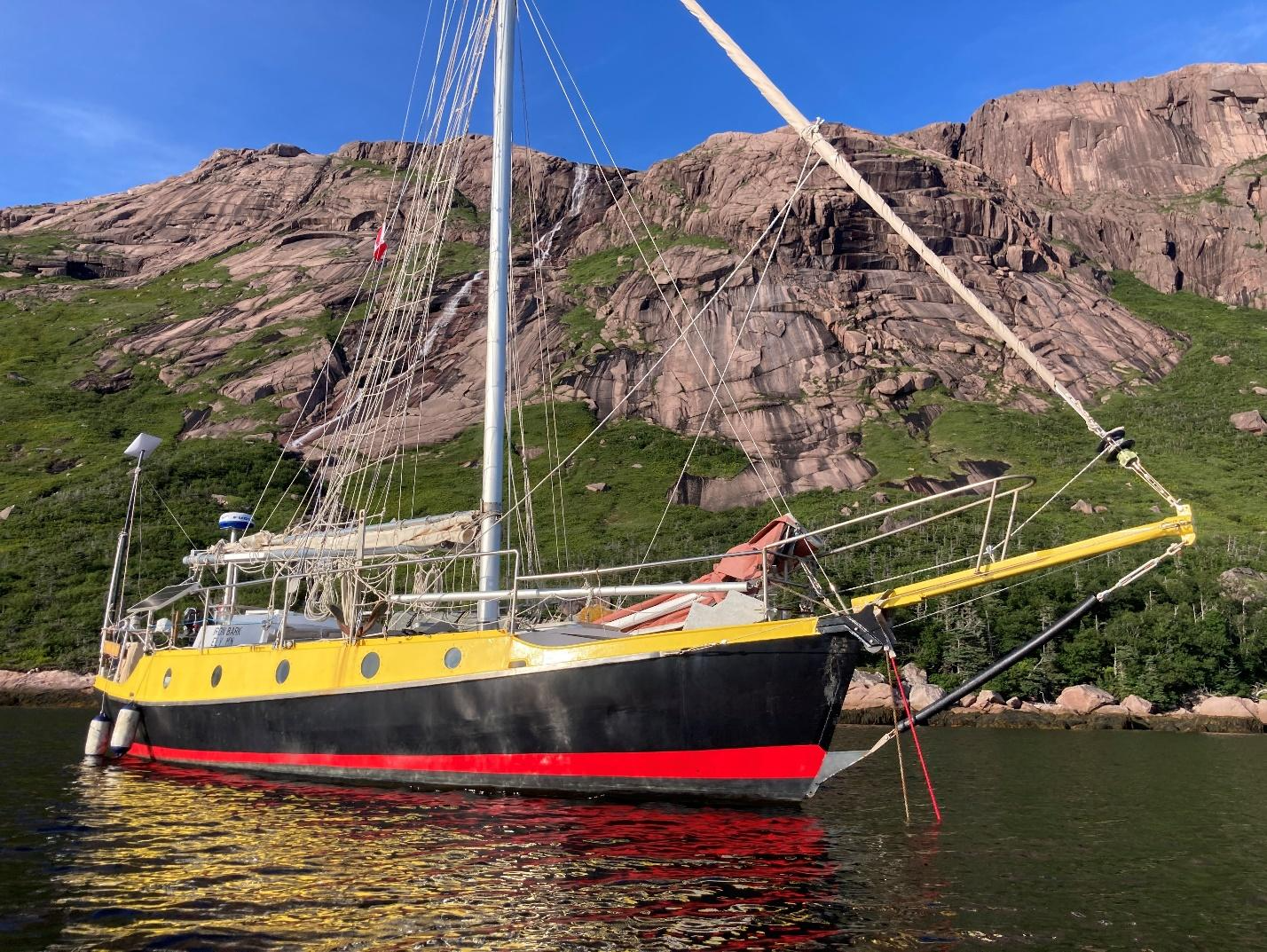
The Freemans sailboat, Iron Bark. Courtesy of Dave and Amy Freeman
When you are an explorer, adventurer and advocate there are always new discoveries to be made—like the joys of sailing, new sights to take your breath away—like the icebergs and humpback whales that surrounded them in Newfoundland last autumn, and new victories that fuel hope for the future—like the 20-year ban on copper-ore sulfide mining in the watershed of the Boundary Waters that was recently passed.
While the Freemans will continue working to help make this ban permanent, they will also continue inspiring future generations to take up the baton for environmental justice by striving to connect students from all over the globe with the wonders of the natural world.
Stay connected to all of Dave and Amy’s adventures on Instagram and Facebook.
